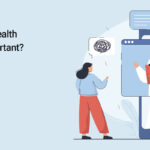he treatment gap of any mental health disorder in India is about 83%. (NMS, 2016) The WHO had predicted that by 2020, 20% of the population in India would suffer from mental health problems when the available number of mental health professionals for this demographic is a mere approximate of 4,000.
For a country with a diverse cultural population, various facets of life common and natural to the ordinary man are often hushed down – feminism, menstruation, premarital sex, sex work, being queer and mental health. Perhaps this is because we are a developing country, and there is much more for us to be educated about. Or perhaps, it is because there are some of us that do not respect diversity – of thought, religion, gender and sexual orientation. In light of the recent political developments, this threat of disrespect of diversity has become a state of alarm.
In a state of alarm, much like an individual responds to stress, the mental health sector of the country begins to shift its focus to building resources to counter this situation. However, there also arises a systemic challenges that impact this response. The treatment gap of any mental health disorder in India is about 83%. (NMS, 2016) The WHO had predicted that by 2020, 20% of the population in India would suffer from mental health problems when the available number of mental health professionals for this demographic is a mere approximate of 4,000. In a country where there is already a discrepancy in providing accessible mental health care, the current political situation is only a catalyst to furthering the problem by promoting discrimination and lack of equality. The political circumstances have proven to be particularly discouraging to the queer community in India, most prominently witnessed by the passing of the discriminatory Transgender Persons (Protection of Rights)Act, 2019. With requirements like a having district magistrate to identify one’s gender and undergoing a sex reassessment surgery as proof to change preferred gender, the Act which is only increasing the oppression and violence faced by trans people, has resulted in widespread anguish along with resistance amongst the community. In such an environment, minority stress faced by trans people is worsened, posing greater risks to developing mental health challenges. The stigma associated with being both queer and having a mental illness puts the whole community at danger of not being connected to accessible and equitable mental health care services in the country.
Another challenge faced by the community is that the mental health professionals themselves may not be adequately informed about different sexual orientations and gender identity related issues, and are in some cases, even queerphobic. In fact, it was only in 2018, that the Indian Psychiatric Society declared that homosexuality is not a disorder. While this is a positive development in that it discourages mental health professionals from using conversion therapies, there needs to be more awareness regarding queer issues and associated mental health care concerns.
To make the task of accessing queer positive mental health professionals easier, you may use our Gaysi Guide to Queer+ve Mental Health Care, which may be accessed here.
The guide is a directory of mental health professionals across cities in India, who are queer positive and adequately trained. Resources like the iCall crowdsourced list of mental health professionals, the list of mental health practitioners for young adults by Mahima Kukreja and the database of LGBTQ+ friendly and affirmative healthcare by Safe Access, have been immensely valuable in the collation of this guide. Please feel welcome to give us any recommendations based on the existing list, or of queer positive mental health professionals in your city.









